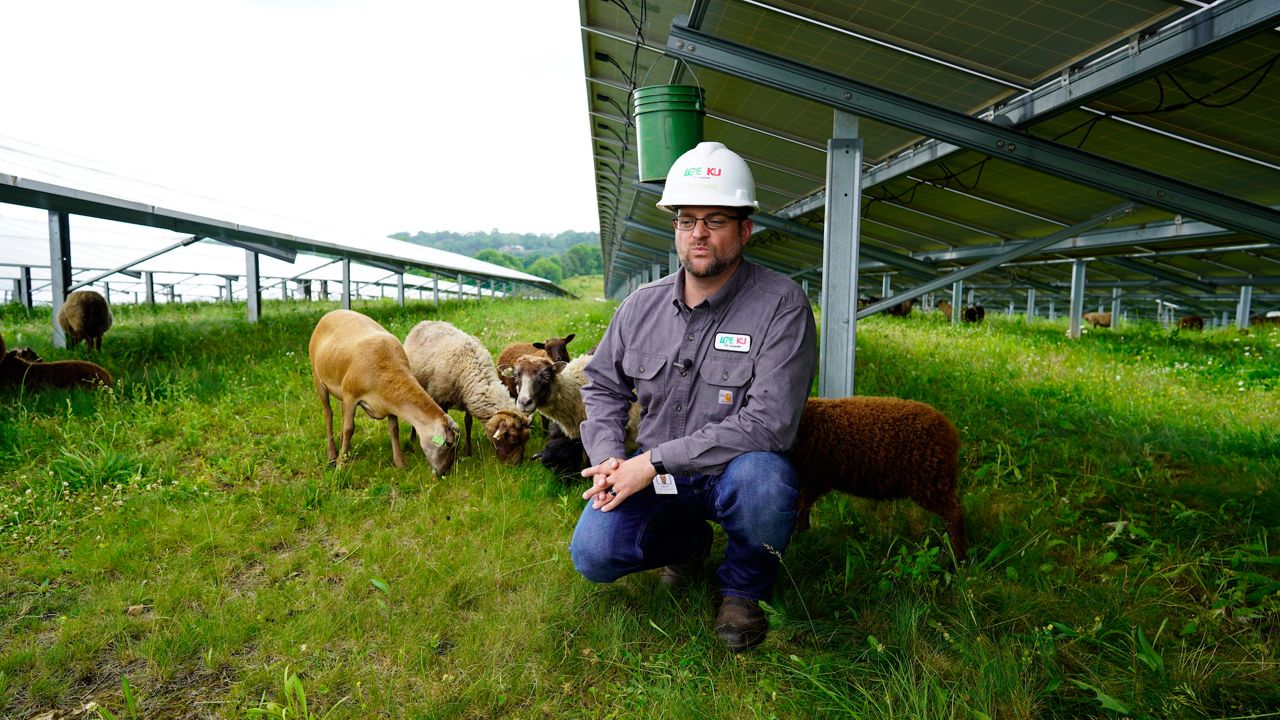HARRODSBURG, Ky. — The LG&E KU solar farm in Mercer County is the largest and most sophisticated solar facility in the Commonwealth. Thanks to some very traditional methods of land management, it’s more down-to-earth than you might think.
What You Need To Know
- E.W. Brown Solar Array is the largest solar farm in Kentucky
- 30 acres of land lie underneath the solar panels
- Shetland sheep prevent vegetation from overgrowing
- Sheep are live streaming on Youtube
Stretching across 50 acres of rolling Kentucky bluegrass is a powerhouse of an operation, the E.W. Solar Array. It's located several miles south of a large coal-fired power plant in rural Harrodsburg.
The solar farm generates enough electricity a day to power 13,000 homes.
“Solar is pretty intensive in terms of the amount of land area it requires," Aron Patrick explained. Patrick is the Technology Research Analysis Manager for LG&E & KU Energy.
The E.W. solar farm generates a fraction of the energy the counterpart coal plant does but he says solar tech continues to advance rapidly.
“The panels are actually becoming more efficient every year," Patrick said.
It’s a showpiece of 21st century "green tech," but the grounds are well-kept by some old world ingenuity.
"As solar farms grow it’s going to be important that grass is maintained," Mike Moore said.
Moore is the farm manager tending to a flock of Shetland sheep grazing the grounds under the solar panels. While some solar farms may spread gravel under the equipment, E.W. has kept the grassland and even planted native wildflowers throughout.

The sheep perform a much needed task – keeping the grass trim. “The grass could obviously grow taller than these panels which would shade out losing the efficiency of these panels," Moore explained.
Tall, dry grass would also increase the risk of fire. The woolly mammals were added last year to prevent overgrowth.
Moore said "getting underneath these panels and weed eating is actually really time consuming and labor intensive," but this particular sheep breed is quite short in stature and easily navigate the grass under the structures. Also, sheep – unlike goats – are much more docile and down-to-earth so you won't see them hopping on the solar panels.
“I come out. I check them twice a week, move them twice a week but overall it’s pretty hands off," Moore said.
And lest you think these grass shearing sheep are completely are off limits to the viewing public. The flock is currently streaming live on Youtube.
“So we have security cameras here at the facility as we do with all our facilities...we’ve decided to live stream some of those security cameras to the web so everybody can watch.” Not a bad idea.



